Libraries are for everyone. I really believe that, and I want my storytimes to be for everyone too. But in looking back at my storytime titles over the past year, I realized that my storytime families didn’t see everyone represented in the books I had chosen. That concerned me, and after a boost of inspiration from colleagues who presented on inclusive storytimes at our last department meeting, I decided to make it a priority in the form of a challenge: include at least one book by or about a person of color every week.
Maybe that seems impossible to you. Or maybe it seems like you’d end up compromising and choosing not-as-good books just to say you were inclusive. There are probably other maybes popping up in your head, but I’m here to debunk them. Sometimes it took a little more digging for find the just right books to share for a certain theme, but I always got there. I never felt like I was compromising, and I discovered some great books that I’m sure I’ll be adding to my regular storytime rotation.
For this next session, I am stepping up my challenge to attempt to feature more #OwnVoices titles and to talk about race when it is appropriate to do so. Even just pointing out the race of the characters or author models affirming differences and identity, which is very important to me as a disabled person with a very obvious physical difference.
So here’s what I did:
J is for Jump
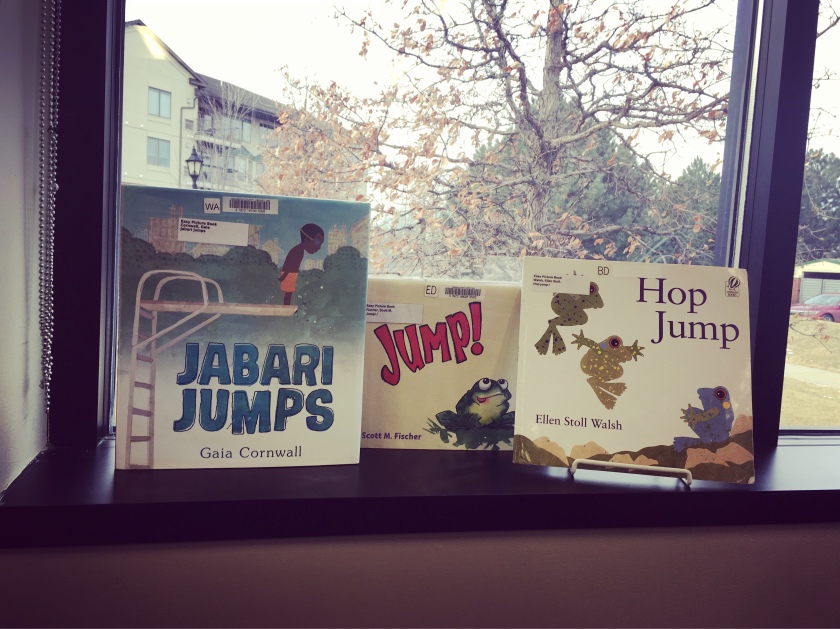
Jump! By Scott M. Fischer
Hop Jump by Ellen Stoll Walsh
Jabari Jumps by Gaia Cornwell (I love this one! It is definitely a storytime favorite.)
L is for Library

Lola at the Library by Anna McQuinn
Read it, Don’t Eat it by Ian Schoenherr
You Can Read by Helaine Becker
M is for Moon

Kitten’s First Full Moon by Kevin Henkes
If You Were the Moon by Laura Purdie Salas
A Big Mooncake for Little Star by Grace Lin
N is for Numbers
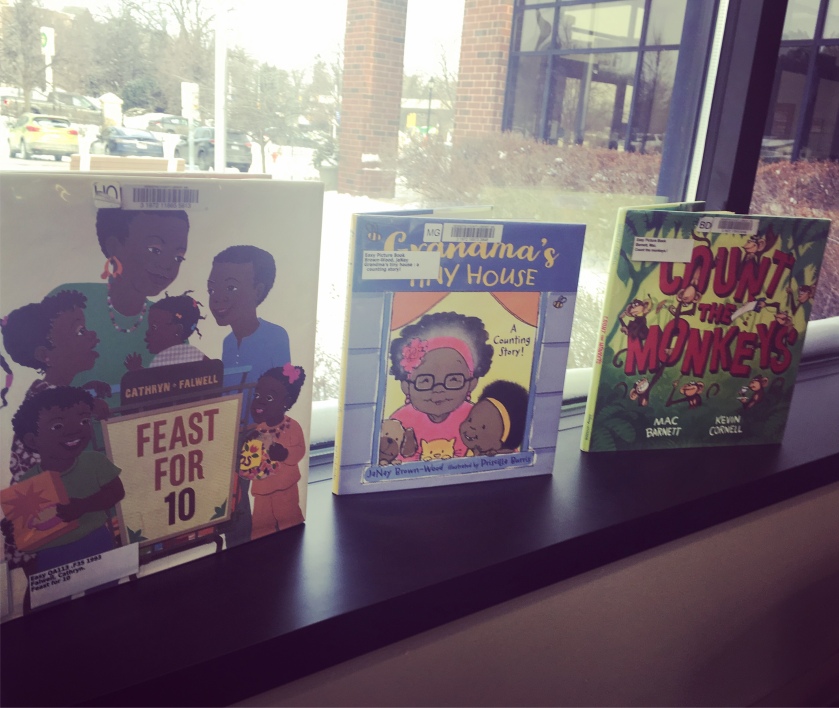
Feast for 10 by Cathryn Falwell
Grandma’s Tiny House by JaNae Brown-Wood (This is a favorite!)
Count the Monkeys by Mac Barnett (Interactive books always go over well with my storytime kids.)
P is for Pirate
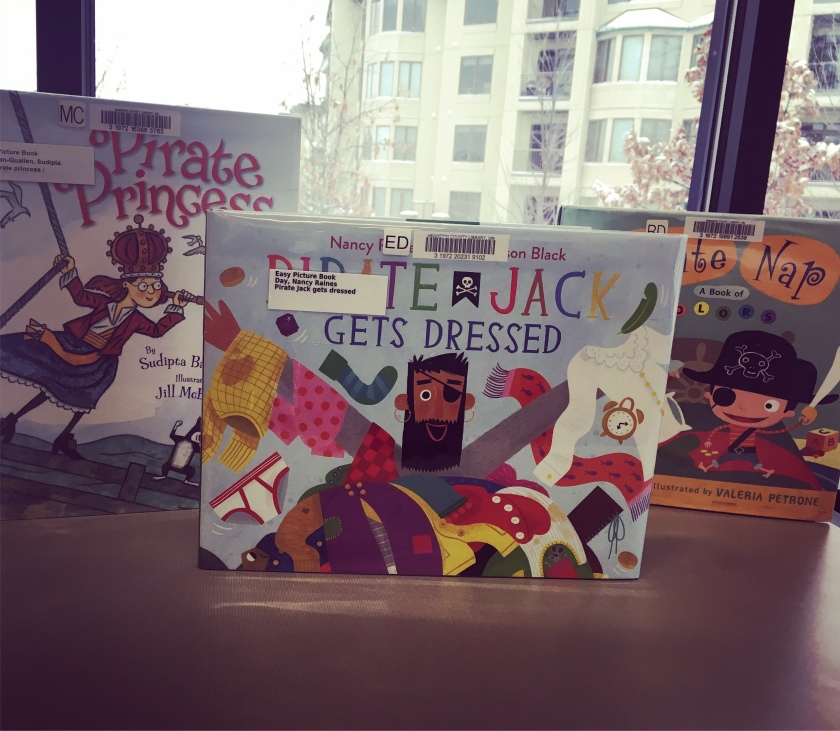
Pirate Jack Gets Dressed by Nancy Raines Day (FYI, Pirate Jack has a hook for a hand just like me.)
Pirate Nap by Danna Smith
Pirate Princess by Sudipta Bardhan-Quallen (Honestly, this was a little long for my group, but it’s a cute story.)
S is for Socks and Shoes
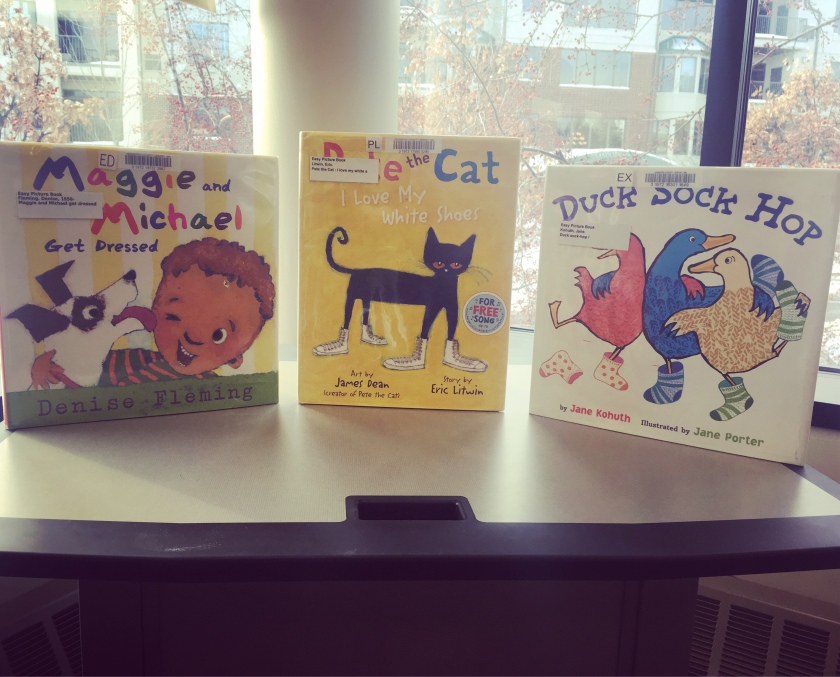
Duck Sock Hop by Jane Kohuth
Pete the Cat I Love My White Shoes by Eric Litwin (Always a good choice!)
Maggie and Michael Get Dressed by Denise Fleming
T is for Trucks and Trains
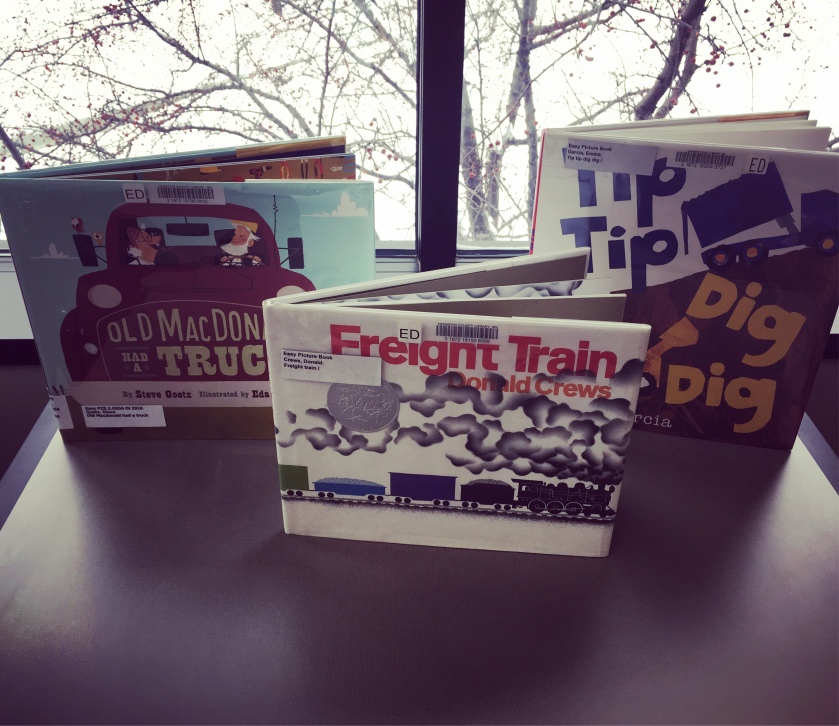
Freight Train by Donald Crews
Tip Tip Dig Dig by Emma Garcia
Old MacDonald Had a Truck by Steve Goetz (My group loved this one.)
W is for Wild Animals
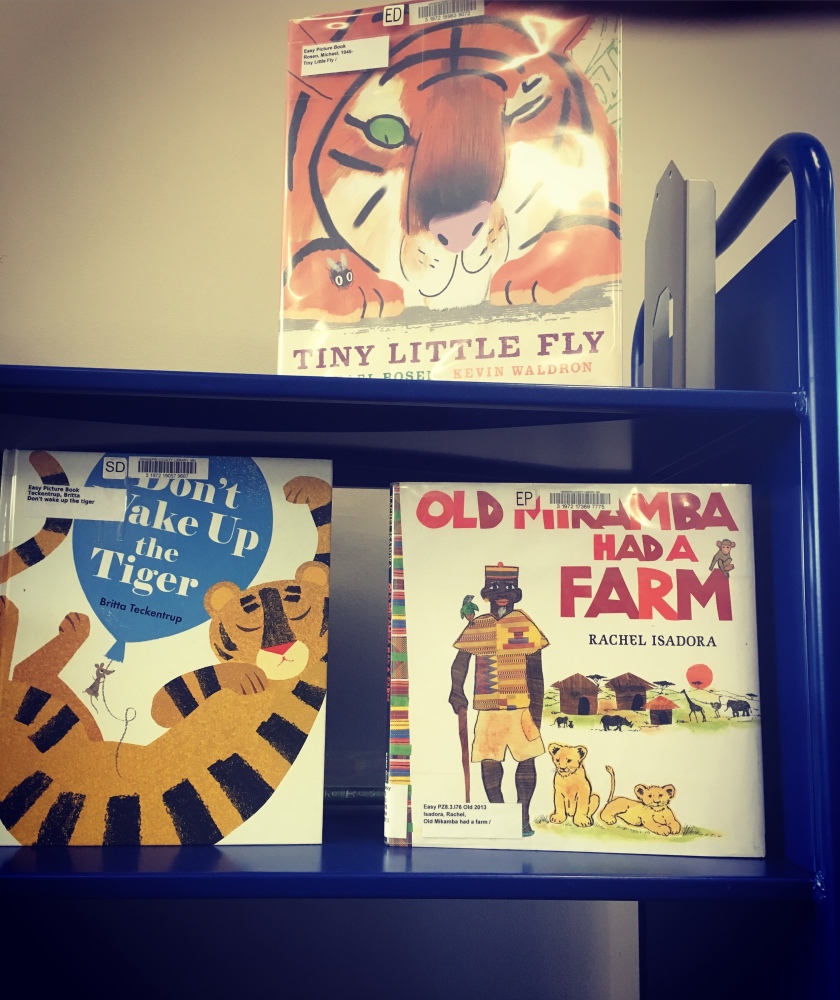
Old Mikamba Had a Farm by Rachel Isadora
Tiny Little Fly by Michael Rosen
Don’t Wake Up the Tiger by Britta Teckentrup (Another great interactive book.)
Follow me on Instagram to see what I’m doing for the spring session, and definitely check out the Talking to Kids about Race in Storytime post on Jbrary for more about inclusive storytime.

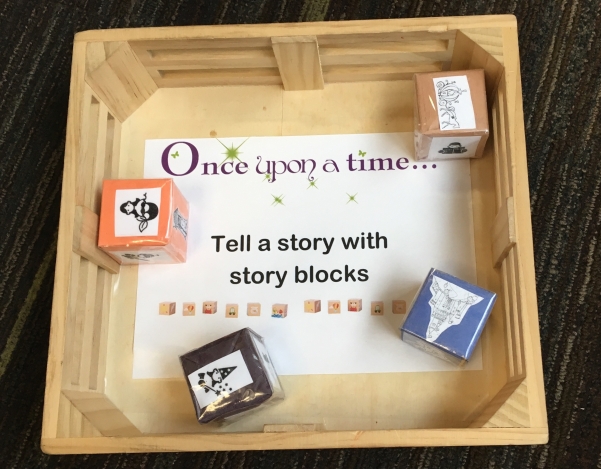 We celebrated Picture Book Month with an Enchanted Forest theme. Kids could dress up as fairy tale characters or use the stuffed animals to tell their own version of familiar stories. The story cubes could spark a creative retelling that mixes up all sorts of fairy tale elements. I made these myself by covering some wooden blocks with construction paper and tape, but you can also buy story cubes or story sticks aimed at preschoolers to encourage storytelling.
We celebrated Picture Book Month with an Enchanted Forest theme. Kids could dress up as fairy tale characters or use the stuffed animals to tell their own version of familiar stories. The story cubes could spark a creative retelling that mixes up all sorts of fairy tale elements. I made these myself by covering some wooden blocks with construction paper and tape, but you can also buy story cubes or story sticks aimed at preschoolers to encourage storytelling.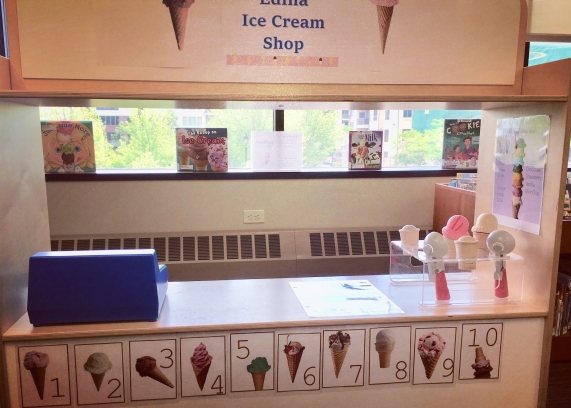 In the grocery store, the ice cream shop, and other community based play spaces, kids can imagine themselves in various roles. They can take turns being proprietor or a customer, seeing the interactions from different roles and developing empathy for experiences outside of their own.
In the grocery store, the ice cream shop, and other community based play spaces, kids can imagine themselves in various roles. They can take turns being proprietor or a customer, seeing the interactions from different roles and developing empathy for experiences outside of their own.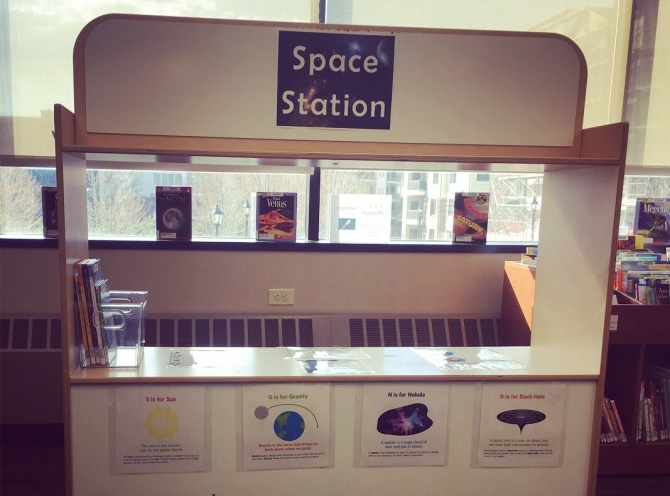 In the Fix It Shop, we named the tools. In the Sense Lab, we encouraged the use of descriptive language as kids explored the world with their senses. Our Space Station offered various science words. Don’t underestimate kids’ willingness to learn complex vocabulary if they are interested in the topic!
In the Fix It Shop, we named the tools. In the Sense Lab, we encouraged the use of descriptive language as kids explored the world with their senses. Our Space Station offered various science words. Don’t underestimate kids’ willingness to learn complex vocabulary if they are interested in the topic!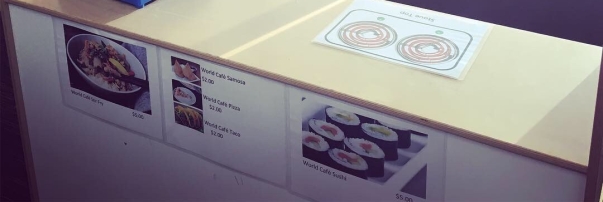 In the community based play spaces (World Café, Ice Cream Shop, etc), the menus and other signage are examples of the way that we interact with printed words as we life our lives. Understanding just how much we rely on printed language is an important part of learning to read.
In the community based play spaces (World Café, Ice Cream Shop, etc), the menus and other signage are examples of the way that we interact with printed words as we life our lives. Understanding just how much we rely on printed language is an important part of learning to read.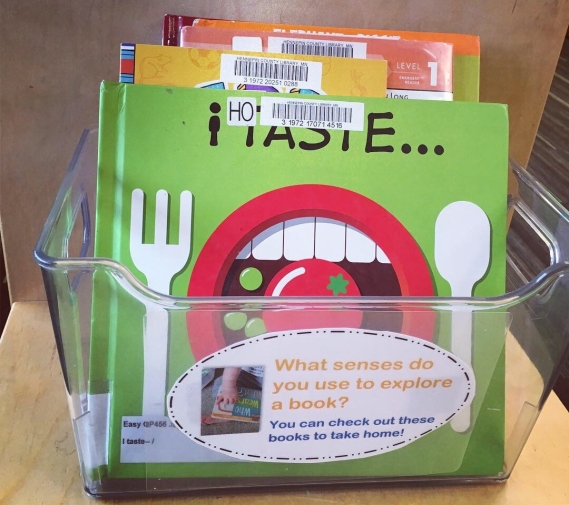 Kids and caregivers are always encouraged to learn more about the topics with books. Learning to read is hard work, and if kids are interested in the topics they are reading about, they be much more motivated.
Kids and caregivers are always encouraged to learn more about the topics with books. Learning to read is hard work, and if kids are interested in the topics they are reading about, they be much more motivated. Exploring shapes and sorting objects based on likes and differences is a first step to letter knowledge. Our grocery store featured pictures of letters made out of food, and the Sense Lab encouraged sorting objects based on how they feel.
Exploring shapes and sorting objects based on likes and differences is a first step to letter knowledge. Our grocery store featured pictures of letters made out of food, and the Sense Lab encouraged sorting objects based on how they feel.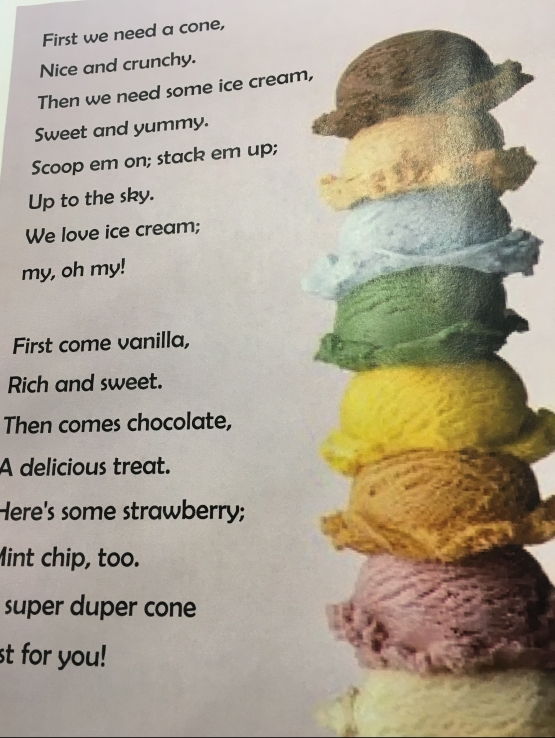 Singing songs and chanting rhymes help kids hear the sounds of words more clearly than in regular speech. We included the words to a rhyme in our Ice Cream Shop and our Space Station to add an opportunity to build phonological awareness while at play.
Singing songs and chanting rhymes help kids hear the sounds of words more clearly than in regular speech. We included the words to a rhyme in our Ice Cream Shop and our Space Station to add an opportunity to build phonological awareness while at play.